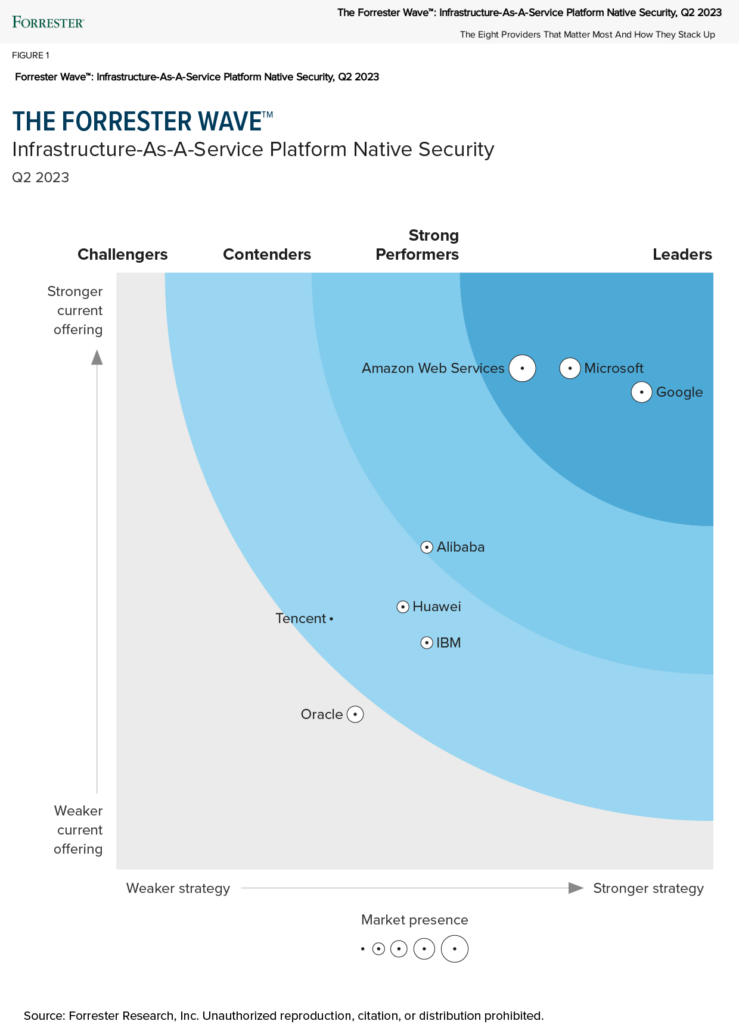Read more of this story at Slashdot.
Ronald.phillips
Shared posts
Microsoft Offers To Charge for Teams To Address EU Antitrust Concerns
'Just Making Great Games' Won't Change Xbox Console Market Share, Says Spencer
Read more of this story at Slashdot.
HDDs Typically Failed in Under 3 Years in Backblaze Study of 17,155 Failed Drives
Read more of this story at Slashdot.
Let's Talk About That Guardians Of The Galaxy Mid-Credits Scene And What It Means For The MCU

This article contains major spoilers for "Guardians of the Galaxy: Vol. 3."
The Guardians of the Galaxy ... no more? Well, in a manner of speaking, at least. Rumors of the demise of writer/director James Gunn's "bunch of a-holes" may have been exaggerated. Despite all the talk about delivering a definitive end to this iteration of the Guardians, leading many fans to assume that Chris Pratt's Peter Quill, Bradley Cooper's Rocket, or anyone else on the team would end up having their ticket punched in heartbreaking fashion, not a single one of the core group actually died. The lovable losers saved Rocket's life from the kill switch that the High Evolutionary (Chukwudi Iwuji) once implanted inside him, Will Poulter's Adam Warlock experienced a change of heart and saved Quill from an icy demise in the vacuum of space, and everyone received the send-off they deserved.
But that doesn't mean the Guardians as we've known them will continue.
Sure, the threequel ends with the promise that "The legendary Star-Lord will return," hinting at Marvel's larger plans for Quill even as Gunn makes his exit from Marvel to focus on "Superman: Legacy" and the rest of his DC responsibilities as co-head of the rival studio. But the mid-credits scene makes it abundantly clear that a new version of the Guardians might very well be set up for future appearances down the line. As with the Avengers themselves, it appears that the Guardians could be in for a revolving door of members. Let's break down the intriguing hints of what the Guardians 2.0 might look like in the future.
Meet The New Team, Different From The Old Team

In an exciting twist for this trilogy, "Vol. 3" shifted the team dynamic right from the opening moments. Rather than focusing predominantly on Quill, Gunn made the long-awaited move to place Rocket and his origin story in the foreground of the film. With audiences now given a clearer understanding of what drives the bioengineered raccoon and the character himself having come to terms with his survivor's guilt, it simply makes sense that the story would end with Quill passing on the mantle of team leader to Rocket. In a rare moment of being moved beyond words, the film ends with the heavy implication that a future "Guardians" movie could position Rocket as its main lead ... until the mid-credits scene puts this tease into practice.
After the credits begin rolling, we dive right back into Rocket's perspective on an unknown planet and surrounded by his new teammates. Sharp-eyed viewers will notice not-so-baby Groot (Vin Diesel) sleeping one off behind the team before his big reveal, but he's joined by a whole cast of exciting characters, both new and old. Sean Gunn's Kraglin is there, having finally mastered the art of Yondu's (Michael Rooker) tricky arrow telekinesis. Adam Warlock and his loyal pet Blurp also make their presence known, adding a serious amount of muscle (and cuteness!) to the new group. And then there's young Phyla-Vell, played by actor Kai Zen. Rescued from the High Evolutionary's sinister experiments and brought on board with the Guardians, she adds a fun new dynamic that could end up paying dividends in the future of the Marvel Cinematic Universe.
It's unclear if this mid-credits scene is meant as a prelude to a potential "Guardians of the Galaxy Vol. 4," likely without Gunn's involvement, but who knows!
Going Their Separate Ways

Who says death is the only way to give a character a conclusive end?
"Vol. 3" concludes by giving each and every one of its members a satisfying ride into the sunset. Drax (Dave Bautista) and Nebula stay in Knowhere, taking on the responsibility of rebuilding the community as best they can. The empath Mantis (Pom Klementieff) embarks on a quest of self-discovery, freed from the pressure and expectations of her new family so she could focus on herself, for a refreshing change. Gamora (Zoe Saldaña), or at least the alternate universe version of Gamora who ended up invading the main timeline back in "Avengers: Endgame" thanks to some time-travel shenanigans, leaves on good terms with the team and especially Quill -- who may not have recovered that spark of romance between them, but at least feels closer to her than before. She returns to the Ravagers as their more hard-edged leader. And as for Quill? He finally comes back to Earth to reconnect with his grandfather, who suffered the loss of his daughter and the disappearance of his grandson on the same fateful night all those years ago.
While we know at least Quill will return to the fold, as mentioned earlier, it doesn't seem terribly likely that we'll ever see this same group of Guardians reappear in future installments of the MCU. We can safely rule Saldaña out, who has previously expressed her desire to retire from the character and make way for a future recasting, and likely Bautista as well, who has made similar remarks about wanting to move on. But all good things come to an end and at least Gunn got to go out on his own terms.
"Guardians of the Galaxy: Vol. 3" is currently playing in theaters.
Read this next: MCU Superpowers That Don't Quite Make Sense
The post Let's Talk About That Guardians of the Galaxy Mid-Credits Scene and What It Means for the MCU appeared first on /Film.
Spencer: People Won’t Start Selling Their PlayStation 5 Consoles Because of Starfield

There's been a lot of talks recently about the lack of AAA first-party Xbox titles in order to be able to compete with Nintendo and Sony. During today's Kinda Funny Xcast, Spencer talked about this topic as well as Microsoft's console market share, thereby also briefly mentioning the highly-anticipated Starfield.
As covered earlier today, Spencer commented on the rather negative reception of Arkane's Redfall, taking full responsibility. "I think we've shown a commitment to games like Sea of Thieves and Grounded to continue to build games", the Xbox boss said. "I also know that these games are $70 and I'll take full responsibility for launching a game that needs to be great."
The interview has more interesting stuff from Spencer, however, including the executive talking about the Xbox console market share compared to that of Sony and Nintendo. For quite some time, the community has been saying that Xbox just needs great games in order to compete, but according to Spencer, it isn't as simple as that.
"I see commentary that if you just built great games everything would turn around", Spencer said. "It’s just not true that if we go off and build great games then all of a sudden you’re going to see console share shift in some dramatic way."
Before that, the Xbox head said: "and I know that will upset a ton of people, but it’s just the truth of the matter that when you’re third place in the console marketplace and the top two players are as strong as they are, and have in certain cases a very, very discrete focus on doing deals and other things that kind of make being Xbox hard for us as a team, [and] that’s on us, not on anybody else.”
In the interview, Spencer also briefly touched on Betheda's Starfield, which, although likely a great game, won't be enough in order to get people to start selling their PlayStation 5 consoles.
“I see a lot of pundits out there that kind of want to go back to the time [when] we all had cartridges and discs and every new generation was a clean slate and you could switch the whole console share", he said. "That’s just not the world that we are in today. There is no world where Starfield is an 11 out of 10 and people start selling their PS5, that’s not going to happen.”
We've included the timestamped video of Spencer mentioning Starfield, and market share, down below:
Interesting words from Spencer in this interview and an honest take on the console market. Do you agree with Spencer? Hit the comments below.
Under The Radar: The Nazi-Killing Thrills Of Sisu, Finding Truth In Fiction With No Bears, And More

(Welcome to Under the Radar, a column where we spotlight specific movies, shows, trends, performances, or scenes that caught our eye and deserved more attention ... but otherwise flew under the radar. In this edition: Iranian filmmaker Jafar Panahi's latest "No Bears" is another personal triumph, "Joyland" tackles painfully relatable South Asian shortcomings, and "Sisu" puts the hurt on some deeply unlucky Nazis.)
Goodbye April, hello May, and welcome to the unofficial start of the summer movie season. If it seems like the yearly schedule for big-screen releases is weirdly compressed, well, that's because it is. We essentially go from the doldrums of the early winter months of the year to a blockbuster-heavy "summer" slate that extends from May all the way to September or even October, before pivoting right back to awards season mayhem. Traditionally, Memorial Day weekend is the point at which it feels a little more socially acceptable to kickstart our more spectacle-heavy entertainment (remember, "Top Gun: Maverick" released just in time for the long holiday weekend last May), but more and more it feels like the calendar has become all but meaningless, with so many big-budget crowd-pleasers jockeying for position.
In the March edition of this column, we pointed out how springtime tends to feel like the forgotten months of the moviegoing calendar. That tone somewhat continued through April, though that's not to say we lacked for worthy options to watch either in theaters or streaming at home. Kelly Fremon Craig debuted "Are You There God? It's Me, Margaret," "How to Blow Up a Pipeline" stirred up quite a bit of noise, and Peacock released the mind-bending series "Mrs. Davis." But for our purposes, we're focusing on a trio of underseen gems: Jafar Panahi's "No Bears," the queer drama "Joyland," and the blood-soaked action of "Sisu."
No Bears Finds Powerful Truths In Fiction

Where does the line between fiction and reality blend into something altogether more complicated? Iranian filmmaker Jafar Panahi's latest film, "No Bears," explores this and even more nuanced concerns in unconventional fashion. You see, Panahi has suffered through government censorship and even arrest in Iran because of his movies, which dare to portray Iranian politics and social customs in an honest light. Originally detained in 2010 and sentenced to house arrest and a 20-year ban on filmmaking in his native country as punishment for his outspoken views, Panahi nonetheless filmed several movies in secret that starred himself as a fictionalized Jafar Panahi, whose cinematic backstory largely reflected his own.
The same is true of "No Bears," in which Panahi plays a filmmaker named Panahi who has been forced to flee Teheran and relocate to a remote border town in Turkey, where he conducts a remote shoot of a documentary that he can't physically visit. Faced with a spotty internet connection that interrupts his efforts, the reclusive Panahi finally steps out into the town and instead trains his curious camera on the villagers. But upon snapping a few innocent photos, Panahi becomes embroiled in a local dispute involving two young forbidden lovers that he happened to capture on film. Between the regressive rites and traditions involving arranged marriage on one side of the camera and his ongoing documentary falling to pieces as his two Iranian subjects struggle to acquire passports in order to escape government overreach, the links between these seemingly disparate storylines -- and Panahi's own exile -- soon becomes clear.
With a playful sense of meta-textual humor and a keen eye on capturing profound truths, "No Bears" is an experience unlike any other.
"No Bears" is currently streaming on The Criterion Channel.
Joyland Tackles Repression, Depression, And Identity

Those who've grown up in South Asian culture have an intimate knowledge of how much entrenched social customs and traditional mindsets can negatively effect those caught in their wake. For decades, women have been burdened with the societal pressures of marrying a total stranger, bearing children, and leaving all other responsibilities to their husband. Men face a strict and suffocating definition of what "masculinity" is supposed to be, relegating anything that dares to exceed those boundaries as a threat to be snuffed out. You'll notice that such a binary mindset leaves out practically the entire spectrum of human identity that doesn't quite conform to one label or the other.
"Joyland," the directorial debut of Pakistani filmmaker Saim Sadiq, addresses all of this and more with an incisive and utterly empathetic approach -- one that resulted in the film's banning in its native country. Though this has since been reversed (albeit with certain scenes subjected to censoring), Pakistan's response all but confirms the fact that the film's subject matter hit its mark.
The story follows unemployed husband Haider (Ali Junejo) and his fiercely independent wife Mumtaz (Rasti Farooq). The almost pathetically ineffectual Haider constantly disappoints his hard-edged father Amanullah (Salmaan Peerzada), but lucks into a new job ... which involves being a backup dancer at an erotic dance theater to a transgender headliner, Biba (Alina Khan). Compelled to give up her own job to stay at home and help with domestic duties, Mumtaz begins to spiral as Haider is drawn more and more to the freedom afforded by Biba. Impressively, the film never once judges any of the main trio of exceptionally well-drawn characters, choosing instead to highlight how their culture has failed them. Don't miss this one.
"Joyland" is currently playing in select theaters.
Sisu Is A Frenzied, Rollicking, And Bloody Good Time

What happens when you cross a legendary, John Wick-like figure straight from myth with a style evoking Quentin Tarantino's exploitation streak? You wind up with something close to the balancing act that "Sisu" (mostly) pulls off. From Finnish writer/director Jalmari Helander, the movie explains from the outset that "Sisu" is a Finnish word for, essentially, finding strength and resilience when all hope is lost.
The avatar for this entire concept is embodied in Aatami Korpi (portrayed with impressive physicality by Jorma Tommila), a rugged gold prospector and former soldier who earned a reputation as an "immortal" killer and a one-man scourge to the invading Russians. Having left his wartime ways behind him, he now quietly ekes out a living in the Lapland wilderness in the latter days of World War II, panning for gold and searching for wildly profitable deposits. When he finds one and seeks to make off with unimaginable wealth through his war-torn country, he runs afoul of a marauding group of Nazis with nothing better to do than accost solitary travelers. This, needless to say, turns out to be a grave mistake.
What follows is a straightforward exercise in the ever-silent Aatami brutally killing Nazis in all sorts of creative ways, turning a fight for survival into a vengeance-seeking crusade against the fascists who simply couldn't leave him be. As the film goes on, divided into six chapters that further lends to the episodic feel of the movie, it quickly becomes clear that "Sisu" works best when it embraces a much more heightened and fantastical tone. Aatami simply refuses to die, no matter how dire his predicament, and viewers can't help but get swept along with him.
"Sisu" is currently playing in theaters.
Read this next: The 15 Best Korean Directors Of All Time
The post Under The Radar: The Nazi-Killing Thrills of Sisu, Finding Truth in Fiction With No Bears, And More appeared first on /Film.
Why the Things You Don't Know about the Dark Web May Be Your Biggest Cybersecurity Threat
Start Your Morning Right With a Bacon, Egg, and Cheese Pancake Casserole

Eating a pancake breakfast sandwich is a flavor experience every salty-sweet-loving human deserves. Bacon, egg, and cheese combined with fluffy pancake batter is such a triumphant blend of smoke, salt, fat, and sweet, this winning combo should be inextricably bound. Please join me in observing the sacred union of BEC…
Researchers Discover 3 Vulnerabilities in Microsoft Azure API Management Service
Framework gives more detail on their AMD Ryzen laptop
Starlink Nixes Plan To Impose 1TB Data Cap and Per-Gigabyte Overage Fees
Read more of this story at Slashdot.
Best open air PC cases in 2023
A PC case traditionally consisted of panels on all sides to keep out dust and control airflow. There has been a steady growth in the number of PC cases available that do away with multiple panels, creating a new segment of what is known as open-air PC cases. If you frequently work on your PC or prefer to see the components exposed to the elements, you’ll want one of these open-air PC cases.
Fungal Attacks Threaten Global Food Supply, Say Experts
Read more of this story at Slashdot.
Montana's Governor's Changes To TikTok Ban Bill Would Ban All Social Media Entirely
Read more of this story at Slashdot.
Finnish Newspaper Uses Secret Room In Counter-Strike To Bypass Russian Censorship
Read more of this story at Slashdot.
Framework’s Modular Laptop 13 Design Gets AMD Phoenix Treatment, Features Ryzen 7040U APUs & Starts At $849

Framework has announced that its upcoming Laptop 13 designs will be featuring AMD's recently announced Ryzen 7040U Phoenix APUs.
Framework Laptop 13 Boasts User-Friendly Modular Design With AMD's Brand New Phoenix Ryzen 7040 APUs
The Framework Laptop 13 system was announced last month at the Framework Next Level event. During the event, the company revealed that it was going to feature both Intel 13th Gen and AMD Ryzen 7040 APUs. But additional details were kept under wraps until today.

Now, AMD has formally announced its Ryzen 7040U Phoenix APU aiming for ultra-thin and low-power devices. This makes them a perfect choice for the super modular Framework Laptop 13. Framework has announced that its Laptop 13 will come in two CPU flavors, the Ryzen 7 7840U & the Ryzen 5 7640U. For these APUs, Framework has come up with a brand new cooling solution that is rated to cool up to 28 Watts of continuous load or if you want to do light-weigh tasks, you can easily switch to the more eco-friendly and efficient 15W mode.
Although the AMD Radeon 780M and Radeon 760M RDNA 3 GPUs available with these APUs are very capable on their own terms, Framework is going one step ahead and offering support for a eGPU through two fully capable USB4 ports.
If you want to use an eGPU, you can do that too! This is because the Framework Laptop 13 with Ryzen 7040 Series processors has two fully capable USB4 ports, with the back left and back right Expansion Cards slots. The front left Expansion Card slot can handle both USB 3.2 and DisplayPort Alt Mode, while the front right Expansion Card can use USB 3.2. This does mean there is one Expansion Card slot that can't support the HDMI or DisplayPort Expansion Cards, and most OS's will provide a warning if you forget. You can charge your Framework Laptop through any of the four Expansion Cards as well.
As for pricing and availability, the Framework Laptop 13 with AMD Ryzen 7040 APUs starts at $849 US for the DIY, and $1049 US for the pre-built variants and are available for pre-orders starting today with the first units expected to ship to customers by Q3 2023. You can use the configuration tool which is available on Framework's webpage to get an idea of the prices.
AMD Ryzen 7040 "Phoenix" Laptop CPUs:
| CPU Name | Family | Process Node | Architecture | Cores / Threads | Base / Boost Clock | L3 Cache | iGPU | iGPU Clock (New / Old) | TDP |
|---|---|---|---|---|---|---|---|---|---|
| AMD Ryzen 7 7940HS/H | Phoenix-H | 4nm | Zen 4 | 8/16 | 4.0 / 5.2 GHz | 16 MB | Radeon 780M (RDNA 3 12 CU) | 2800 MHz / 3000 MHz | 35-45W |
| AMD Ryzen 7 7840HS/H | Phoenix-H | 4nm | Zen 4 | 8/16 | 3.8 / 5.1 GHz | 16 MB | Radeon 780M (RDNA 3 12 CU) | 2700 MHz / 2900 MHz | 35-45W |
| AMD Ryzen 5 7640HS/H | Phoenix-H | 4nm | Zen 4 | 6/12 | 4.3 / 5.0 GHz | 16 MB | Radeon 760M (RDNA 3 8 CU) | 2600 MHz / 2800 MHz | 35-45W |
| AMD Ryzen 7 7840U | Phoenix-U | 4nm | Zen 4 | 8/16 | 3.3 / 5.1 GHz | 16 MB | Radeon 780M (RDNA 3 12 CU) | 2700 MHz | 15-30W |
| AMD Ryzen 5 7640U | Phoenix-U | 4nm | Zen 4 | 6/12 | 3.5 / 4.9 GHz | 16 MB | Radeon 760M (RDNA 3 8 CU) | 2600 MHz | 15-30W |
| AMD Ryzen 5 7540U | Phoenix-U | 4nm | Zen 4 | 6 / 12 | 3.5 / 4.9 GHz | 16 MB | Radeon 760M (RDNA 3 8 CU) | 2600 MHz | 15-30W |
| AMD Ryzen 3 7440U | Phoenix-U | 4nm | Zen 4 | 4 / 8 | 3.0 / 4.7 GHz | 8 MB | Radeon 740M (RDNA 3 4 CU) | 2500 MHz | 15-30W |
Sorry, Dads: Kevin Costner Is Leaving Yellowstone After Season 5

In the worst news to hit Dad TV since "Home Improvement" ended, it appears that Kevin Costner might not be returning to "Yellowstone." According to ET Online, the actor is reportedly not going to come back to the hit Paramount Network series following the current season. This is a pretty massive revelation given the fact that "Yellowstone" was the most-watched TV show of 2022 and Costner is the biggest star and lead character. There have been reports of Costner clashing with the series' producers (including co-creator Taylor Sheridan) over his shooting schedule for the remaining episodes of season 5, so the reveal isn't a total shock but is still pretty big news. "Yellowstone" is not just one of the biggest shows on TV, it's also spun off some pretty major shows, like the Sam Elliott-starring "1883" and the Harrison Ford and Helen Mirren vehicle "1923."
It's not just dads that love "Yellowstone," though it might be perfect dad-nip with its rugged western setting and Costner as the star. It's hard to know whether the show can survive without him as patriarch rancher John Dutton. No one from Costner's camp or Paramount has confirmed the news yet, but it's looking like Dutton might be leaving the ranch. Will he retire? Be killed off? We'll have to wait and see what Sheridan does to keep his incredibly popular series going.
So Long, Cowboy

According to ET's sources, there is still no update on when the show will resume filming in Montana to finish the remaining episodes of season 5 due to a multitude of reasons, including the current WGA strike. The announcement also comes on the heels of Costner, Sheridan, and the rest of the cast not showing up to a scheduled panel at PaleyFest in Los Angeles. Things are not so sunny in Yellowstone, and it's not looking good for the future of the series. Puck News reporter Matthew Belloni, who covered some of the on-set issues plaguing the series, also reported that the rest of season 5 still has unfinished scripts — possibly waiting to see if they're going to have to write Costner out of the series.
Costner's attorney rebutted the idea that Costner wasn't willing to spend time on set, explaining that the actor is "incredibly passionate about the show and has always gone way above and beyond to ensure its success." In addition to the now-finished "1883" and the ongoing "1923," there is also a "Yellowstone" spin-off series starring Matthew McConaughey in the works, potentially as a sequel/follow-up to the main "Yellowstone" show.
The news of Costner potentially leaving broke just a day after news of his wife of nearly two decades, Christine Costner, filing for divorce. It seems like Costner is having a pretty rough week, and it's only Wednesday. We'll have to wait and see what happens with "Yellowstone," but at least we'll have "1923."
Read this next: Why These Actors Left Hit TV Shows
The post Sorry, Dads: Kevin Costner is Leaving Yellowstone After Season 5 appeared first on /Film.
Passwordless Google Accounts Are Here - You Can Now Switch To Passkey-Only
Read more of this story at Slashdot.
Saints Row DLC, The Heist and The Hazardous, finally arrives next week

He probably thinks he's a real cowboy...
If you remember that a new Saints Row game came out in the summer of last year, then you might be pleased to hear that the open-world adventure's first DLC expansion will finally arrive next week, nine months on from the game's initial release on PlayStation, PC, and Xbox platforms.
The Heist and The Hazardous — which hits all platforms on May 9 — will see our uber-trendy gangsters on a mission of vengeance, tracking down the double-crossing Hollywood star Chris Hardy following a botched assignment. The expansion will feature new in-game events, story missions, and a wardrobe full of new clothing, weapons, and other related chicanery. The Heist and The Hazardous is the first of three paid DLC expansions planned for the title in 2023.
https://twitter.com/SaintsRow/status/1653399037180010500?s=20
Saints Row, which launched last August after being delayed from its initial spring release date, saw the tongue-in-cheek crime franchise rebooted with an oddly elite fashion aesthetic and a cast of younger, entrepreneurial stars. While the game itself was serviceable, with high-octane action and an appetite for destruction, many critics and fans were non-plussed at the reboot's general vibe, complaining about a dated mission design, obnoxious and offputting dialogue, as well as a slew of technical issues.
Developer Volition has been releasing updates to correct the latter problems, which has led to this long delay between launch and DLC drops. Soon after release, it was announced that Volition was being transferred from Deep Silver to another Embracer Group publisher, Gearbox Entertainment.
Saints Row is available now on PlayStation, PC, and Xbox. But not Stadia. Not anymore.
The post Saints Row DLC, The Heist and The Hazardous, finally arrives next week appeared first on Destructoid.
Jamie Foxx Brought A Key Cultural Perspective To A Scene In Ali

In Michael Mann's 2001 biopic "Ali," Jamie Foxx played Drew Bundini Brown, Muhammad Ali's assistant trainer. Brown was, as the film depicted him, a little crass, openly lascivious (he confesses his particular fetishes in public), and not always up to living the way Ali would have liked him to. In one notable scene, Ali (Will Smith) bursts into Brown's dingy apartment and finds him hungover. Ali screams at the man to respect himself.
Mann is a filmmaker fond of shaky, handheld camera moves, was an early proponent of digital photography, and seeks a certain kind of steely, assertive realism in his work. This was an exhilarating approach for a high-profile Hollywood biography like "Ali," a film that was nominated for Best Actor and Best Supporting Actor at the Academy Awards.
It's worth noting that Mann and his three credited "Ali" co-screenwriters, Eric Roth ("Forrest Gump") and writing duo Stephen J. Rivele and Christopher Wilkinson ("Nixon"), are all white men. They may have been able to capture the historical details correctly, and they may have accurately depicted Muhammad Ali's unique character, largely thanks to the legendary boxer's many outspoken press conferences and interviews, but what they lacked was the perspective of the Black community. It was here that Jamie Foxx stepped in.
In a 2018 interview with Yahoo! Life, Foxx recalled an afternoon he spent with Mann during the production of "Ali," and how a chance encounter with one of Foxx's fans gave the actor a chance to tell his director what needed to happen in a key "Ali" scene.
'Black People Don't Do It Like That'

The scene in question was when Brown was to meet Muhammad Ali for the first time. Because Ali was already a celebrity when Brown met him, Mann felt Brown needed to be quiet and nervous in the champ's presence. Jamie Foxx immediately pointed out to Mann that this would not be an accurate response between two Black men. He said:
"I had never worked with Michael Mann, so I wasn't aware of the presence, and I had to learn some things. But he learned some things as well. Like, when it came to me walking in as Bundini talking to Ali the first time, he said you should be scared of him. I asked why. He said, 'Because he's the champ.' And I said, 'So?' He said, 'Why are you saying, "So?"' I said it was because Black people don't do it like that."
Foxx patiently explained to Mann that Brown would not have been intimidated by Ali. Indeed, he would have approached with friendliness and confidence, showing his gregariousness and willingness to pal around with a celebrity. Foxx initially followed Mann's initial direction, but felt his instincts as an actor were still the correct way to play the scene. Foxx said:
"[I said to Mann] 'If I see someone who's a star, and I say hello to them, I feel like I'm a part of them.' So we shot it the nervous way, and I didn't think it was the right thing, but I had to respect the director."
Foxx was able to prove his point to Mann a few days later when a random fan approached the actor while he was filming an outdoor scene in Miami. The fan possessed the same confidence Foxx said Brown ought to have.
'Holler At Me Foxx, What We Doing Tonight?'

Foxx couldn't have communicated his intentions better than if he staged the following incident himself. Foxx doesn't say the name of the fans who approached him, but one person provided a real-world example of exactly what Foxx had tried to communicate to Mann:
"[A] few days later, I was standing on the street, and we're shooting something in Miami, and this little white couple comes up and quietly says, 'Mr. Foxx, is it okay if I get a picture?' and I said, 'Sure,' and we took the picture. As soon we get through with the picture, I hear a brother across the street — 'FOXX! What about it, baby? What's up?' He comes across the street, got a little bag of something he's eating, 'What's good, baby? Holler at me Foxx, what we doing tonight?'"
This person was not a friend of Foxx's. He was merely a confident human being. Foxx pointed out that this fan was more emblematic of the way Black men communicate. Indeed, Foxx pointed out that the confidence of a fan is a subtle test of the celebrity's character. Foxx said:
"Mann says, 'Do you know him?' I say, 'Never met him in my life. That's just the way we are. If I'd have shined on him, and told him I couldn't holler at him, he would have told everybody Jamie Foxx is an a**hole.'"
After this encounter, Mann and Foxx went back to the scene in question and reshot it in the manner Foxx preferred. Not only did the actor like the finished product better, but he felt it informed Bundini's optimistic character for the rest of the movie.
Michael Mann, Foxx admitted, is a brilliant director. But even the most seasoned pros can learn from their cast.
Read this next: The 14 Best Film Acting Debuts Of All Time
The post Jamie Foxx Brought a Key Cultural Perspective to a Scene in Ali appeared first on /Film.
Download the eBook: What Does it Take to be a Full-Fledged Virtual CISO?
Desktop PC gaming is becoming too expensive thanks to the latest graphics cards
It's no secret that I have a pretty cynical attitude about PC hardware these days, and one of the very last articles I wrote last year was about the terrible state of the PC in 2022. I didn't have high expectations for GPUs this year, and somehow, I've been impressed by how terrible things have turned out thus far. In fact, the Nvidia GeForce RTX 40/AMD Radeon RX 7000 generation is turning out to be perhaps one of the worst, if not the worst, generations in all GPU history.
Framework Provides New Details On Its Upgradeable/DIY AMD Ryzen Laptop
Put Some Plantain Chips in Your PB&J

“Put some potato chips in there” is a sandwich hack so timeworn, I’m hesitant to characterize it as anything more than generally accepted wisdom. What sandwich wouldn’t benefit from extra salt and texture? Who actually prefers a peanut butter and jelly sandwich without a hidden layer of fried potato (preferably the…
New study of a company that embraced AI early on reveals that its human workers became much more productive. You know, because of all that wonderful human-AI synergy, not because the humans were suddenly terrified of losing their jobs [Obvious]
Forrester names Microsoft a Leader in 2023 Infrastructure-as-a-Service Platform Native Security report
As we continue to drive toward making the world safer and more productive for all, it is vital we empower our customers to secure every aspect of their organization. Each day we are seeing more advanced security threats as bad actors develop new tactics that aim to take advantage of businesses as they digitally transform and adopt a multicloud infrastructure. At Microsoft, we understand cloud security is a problem you manage, not a problem you solve, so we are constantly working to use data, intelligence, AI, and automation to provide a comprehensive solution that helps us all respond faster and even stay one step ahead of bad actors and events.
Core to this approach is our ability to help customers do more with the security of Microsoft Azure that’s built-in, embedded, and out of the box, and extending that protection to multicloud infrastructures. We are honored to be recognized as a Leader in The Forrester Wave™: Infrastructure-as-a-Service Platform Native Security (IPNS), Q2 2023 report. The IPNS category compares public clouds and highlights the native security provided to customers on public cloud platforms. This includes capabilities for storage and data security, identity and access management (IAM), network security, and hardware and hypervisor security. In the report, it is great to see Forrester recognize the continued progress we have made, noting “Microsoft provides strong CSPM and CIEM [cloud security posture management and cloud infrastructure entitlement management] capabilities. It has made significant investments in CSPM and CWP [cloud workload protection]. The vendor sports a strong vision for IPNS offerings, and its execution roadmap and market approach are ahead of the competition.”

Additionally, Microsoft received a top score from Forrester in the current IPNS offering category and had the highest possible score in the data centers, security certifications, roadmap, market approach, innovation, and seven other criteria. The report states, “Microsoft offers strong admin IAM management, above-par CSPM and CIEM capabilities, and broad coverage guest OS [operating system] security. Network security capabilities and multicloud support are ahead of others evaluated as well.”
Microsoft is committed to continual innovation and investment in cloud security. In Azure, our security approach focuses on defense in depth, with layers of protection built throughout all phases of design, development, and deployment of our platforms and technologies.
In a constantly changing world, we work hard to release features that help our customers strengthen their security posture, accelerate protection against modern threats, and reduce risk throughout the cloud application lifecycle. Microsoft Defender for Cloud is a critical component of that strategy. Natively available in Azure, it helps protect multicloud and hybrid environments end-to-end, from development to runtime as a comprehensive cloud-native application protection platform (CNAPP). Our multicloud approach means customers get the protection they expect from Microsoft—not only in Azure—but also by centralizing and unifying their security needs on other public clouds as well.
Customers like VECOZO choose integrated security from Microsoft across Defender for Cloud, network security, and identity to combine their various security layers and functionalities into an easy-to-deploy, easy-to-manage, highly secure environment. Igor van Haren, Lead Architect, VECOZO, said “There’s always security work to be done, but with Azure, we’ve gained improved visibility, removed some of the most tedious work from our administrators’ agendas, and adopted a number of solutions that aid our Zero Trust security approach.” Read more about VECOZO’s experience in their customer story.
Over the last several months we have also announced new feature releases across Defender for Cloud, network security, and other services that continue to build on our vision for a comprehensive, intelligent cloud platform. These include:
Microsoft Defender Cloud Security Posture Management is now generally available to help organizations get an end-to-end view of risks and prioritize remediation across their multicloud environments with contextual cloud security. And now, new integrated data-aware security posture capabilities allow teams to automatically discover their data estate, assess threats to their most critical assets and sensitive data, and proactively prevent breaches along potential attack paths.
Microsoft Defender for Storage now offers sensitive data discovery and malware scanning to address threats to critical storage resources in the cloud. New scanning capabilities prevent infiltration attempts with near real-time detection of metamorphic and polymorphic malware across cloud data.
Microsoft Defender for APIs is in preview. A new offering as part of Defender for Cloud, Defender for APIs helps organizations gain visibility into business-critical Azure APIs, understand their security posture, prioritize vulnerability fixes, and detect and respond to active runtime threats within minutes. For more information on future Defender for Cloud releases, our roadmap showcases a comprehensive list of information about new features.
Microsoft Azure Firewall Basic, a new SKU of Azure Firewall, delivers an enterprise-grade network firewall to small and medium businesses (SMBs) at an affordable price point. You get essential network firewall capabilities, like filtering of east-west and north-south traffic with built-in threat intelligence to block malicious traffic. As a cloud-native service, Azure Firewall is easy to set up, configure, and manage, and requires zero maintenance.
Microsoft Azure DDoS IP Protection, a new SKU of Azure DDoS Protection, is designed with SMBs in mind and delivers enterprise-grade, cost-effective DDoS protection. You can defend against the most sophisticated DDoS attacks with always-on monitoring and adaptive threat intelligence that is tuned to your normal traffic volume. Customers have the flexibility to apply protection on individual public IP resources.
These innovations highlight how Microsoft is committed to solving some of the toughest security challenges we all face today. By continually improving the platform, tools, and intelligence our customers need, we can help drive meaningful change in how we protect the world around us.
We invite you to read the full Forrester report here.
To learn more about Microsoft Security solutions, visit our website. Bookmark the Security blog to keep up with our expert coverage on security matters. Also, follow us on LinkedIn (Microsoft Security) and Twitter (@MSFTSecurity) for the latest news and updates on cybersecurity.
The post Forrester names Microsoft a Leader in 2023 Infrastructure-as-a-Service Platform Native Security report appeared first on Microsoft Security Blog.
Part 8. Our teams are, by nature, part full-time government employees and part contractors.
The architecture of our teams
Having a broad complement of full-time software developers and product managers is critical to leading an organization that operates as a product team. At the same time, we recognize that federal tech resources are in scarce supply in the market, and the technical landscape changes more quickly than the traditional government employee pipeline can accommodate. While we seek to increase the number of full-time technical staff in OIT, our efforts cannot match our demand for tech talent. Our scope spans over two thousand locations, a thousand systems, and over a half million users. As a result, we will continue to depend heavily on contractors to deliver on our mission, and we embrace them as members of one team. To do this effectively, we conduct project reviews and planning jointly. We are clear on who is responsible for what, and we work together to continuously improve our technical rigor as a single Product Group at VA.
Contractors as a critical component of the IT Product Group
The government often gets into a mindset of shielding contractors from meetings, decision-making, and performance review; this is a mistake. When you think about the structure of most product and development teams within the commercial space, they act as a single team. We also must do this in the federal environment, even though a lot of our work is outsourced.
Operating as a single team still means we must hold our contractor partners accountable for their portion of the end result and how they do the work. By doing so, we get better incrementally and bring forward the issues they face. We expect them to develop ideas on making process improvements, thereby getting into a rhythm of continuously improving. As a measure, if we don’t know the names of the contractors, then we aren’t getting a balanced view because we don’t hear those voices. If we aren’t hearing from their leadership on what is going well and what isn’t, then there’s an important voice missing from the conversation. So, again, we must act as one virtual team, with all members performing their job.
Of course, this doesn’t mean that we mistake purposeful inclusion for blanket participation. It’s not always appropriate or ethical for contractors to participate in decisions and planning that would give them an unfair advantage during competition for a contract requirement that flows from privileged conversations around planning and decision making. Careful coordination with the Contracting Officer and Office of General Counsel during both the contract planning and post-award stages is critical to mitigating these risks.
At the same time, we must recognize that they are contractors. Just like our full-time employees, the government must take action if the contractor is not performing well. It’s a delicate balance of acting as a team and holding contractors responsible for their work. We in the development teams and in Strategic Sourcing do this by having candid conversations with their leadership and by documenting contractor performance, reflecting on how well the contractor performed on past work and whether we would want to work with them again in the future. Every time VA conducts a Federal Information Technology Acquisition Reform Act (FITARA) review, it serves as a gate as we consider how well the contractor has performed before continuing our partnership.
My past experience working on the team that recovered from the early failed effort of Healthcare.gov illustrates the importance of operating collectively as one product group and ensuring performance-based accountability at both the government and contractor levels. Originally, everything was farmed out to multiple contractors who were each responsible for delivering individual pieces of the larger system. Each one believed that their individual pieces would “magically work,” despite the immense complexity and scope of the system. This led to a lack of accountability and a reluctance to work together to solve the problem when those individual pieces resulted in a dysfunctional product. During the recovery, we forced the teams to act as one composite team, problem solving together as one.
This project also illustrates why a great full-time system architect is so critical. If you’re contracting several pieces out, you need an architect with deep systems development experience who can ensure that you have a solid system design to begin with, assess the technical roadmaps chosen by the teams, identify the problems before they explode, and ensure the teams are working together in harmony towards the same goal.
Don’t use contractors as a crutch
In most cases, I believe it’s a mistake to contract out top-level strategy work. It can be supported by contractors with specific knowledge and insight, but in the end, the internal teams are the ones that know the environment best and will be on the hook to deliver results for stakeholders, policymakers, and taxpayers in the future. They are going to be the ones who lead the organization through implementing the strategy, and they need to have been intimately involved in its creation and the development of the implementation roadmap. They must be passionate about that role, understand it well, connect it to the strategy, evangelize it, and communicate to stakeholders. That just can’t be outsourced.
The value of contractors is, instead, to leverage them to dig in and do independent assessments in areas that we don’t have the full-time capacity or the independent perspective to do. But if we use them in this way, we need to be sure that the questions we’re asking them to answer are ones that we truly can’t live without the answers to – e.g., don’t ask them to do a complete industry assessment when we know that we really only have two feasible options. In fact, don’t use them at all until you believe you have the problem well framed and the critical questions identified.
Innovate on your contract vehicles
The government relies heavily on contractors to accomplish the mission. This necessitates rigorous evaluation not only in ensuring that we’re using the most appropriate contract vehicles to satisfy the business need, but that we’re making contract selections in the right way—both areas that are ripe for innovation.
This demand for contract labor has created a vast, lucrative marketplace for vendors. Amid all this choice, it can be difficult for the government to align the right contractor solution to the government’s requirement. Cutting through the marketing pitches of contract proposals in order to evaluate the feasibility of their approach can be difficult, and that’s why you sometimes see proposals that make sense on paper but reflect a different reality when it comes to execution. At VA we utilize a “show me, don’t tell me” evaluation approach. Instead of long written “book reports” or other static proposals that do not directly reflect how a vendor delivers, we review real work products and processes demonstrated by vendors in response to a fictional problem. Alternatively, we’ll competitively award a small project to a promising contractor to see how well they deliver. Both approaches provide us confidence that the vendor is capable of delivering high quality solutions in support of our Veterans in a way that aligns with OIT’s working principles of engineering excellence and with a focus on the customer and user experience.
We review the past expertise and experience of the vendor. This includes the review of case studies, project artifacts, and live products, delivered by the vendor during previous projects, allowing us to separate the “fakers” from vendors who truly specialize in digital transformation and agile delivery.
We also ensure that we contract for systems “in increments.” If a contractor is not delivering, there is always an “Optional Task” or “Option Period” milestone coming up where we can reconsider whether to continue the relationship. This is particularly important in major modernization projects. We’re increasingly defining contracts with a series of incremental deliverables that avoid “big bang modernization,” where the entire system is bought as a single, fully deployed system. Instead, we’re focusing more and more on delivering the MVP (Minimum Viable Product) first, validating it meets the goals, and scaling with success.
Veterans can only receive the benefits and services that they deserve when VA has a strong partnership between government and contractors delivering modern software products. This doesn’t happen by accident. In response to tough labor markets, tight government resources, and the ever-changing nature of the IT problems that we’re trying to solve, we lean heavily on a growing contractor workforce to modernize our software products. As we continue to innovate around these acquisitions to ensure the government is maximizing value from taxpayer dollars, we must also not slip into the old way of thinking—that you can purchase a little help from here and from there and then put it all together for a working product. The complexity of our systems and software requires a mindset where the government and the contractor workforce operate as one team, and both are held accountable for the product’s success.
What to Know About the Loneliness Epidemic - CNET
23 Great Gifts Under $50 for 2024
T-Mobile Discloses 2nd Data Breach of 2023, This One Leaking Account PINs and More
Read more of this story at Slashdot.













